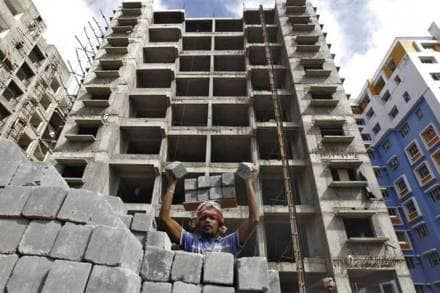The residential real estate market displayed more resilience to Covid-19-induced lockdowns and disruptions during Q2 2021 compared to a year ago. Housing sales grew 83% year-on-year on a lower base to 19,365 units. However, sequentially, sales declined 23% from 25,583 units in January-March 2021.
JLL India said sales were driven by the low base effect, less stringent lockdowns, and acceleration of the vaccination drive during April-June, demonstrating improved resilience in the market. During the first wave of Covid-19, residential sales fell a record 61% quarter-on-quarter to 10,753 units in Q2 2020. However, the second wave’s impact has been limited with sales in Q2 2021 declining 23% on a sequential basis, it said.
JLL India head (residential) Siva Krishnan said the development focus on mid and affordable segments continued in the first half of 2021, with 72% of new launches being in the sub-Rs 1 crore category. Moving ahead, while focus on these price segments is expected to continue, developers are likely to consider new launches of larger-sized apartments in order to capture changing consumer preferences.
“Homebuyers have also become more cautious in their home purchase decisions. Today, as most prospective buyers start their search online, the more established developers with good online presence and immediate brand recall benefit. Also, there is an increased preference and willingness to pay a premium for projects by developers with an established track record,” he said.
During January-June 2021, sales of more than 45,000 units were recorded against 38,204 units in H1 2020, an 18% y-o-y growth. The sustained level of sales presents clear signs of demand and buyer confidence returning to the market. The need for secured tangible assets and aspirations to own larger homes as remote working becomes the new norm is driving sales of properties.
Mumbai has consistently been the largest contributor to sales over the last five quarters. In H1 2021, Mumbai accounted for 26% of total sales. Delhi NCR, Pune and Hyderabad followed, each contributing 15% or more.
JLL India chief economist Samantak Das said while the second wave dented the market following a good recovery curve, the impact was muted when compared to last year. Most of the changes observed have been structural in nature and demand for homes is only expected to increase.
“The RBI is expected to hold policy rates at the existing historically low levels, while prices will remain mostly range-bound. The resultant affordable buoyancy will continue to attract fence sitters and serious homebuyers. If the downward trajectory in Covid-19 cases is sustained, the sector is expected to make a healthy recovery in the second half of 2021,” he said.
Apartment prices in most markets have been stagnant in the past few years. In Q2 2021, prices remained largely stagnant when compared to the previous quarter, across all the seven markets under review.
Developers in certain markets have been providing moderate price discounts, attractive freebies including payment schemes like zero EMIs for a year to boost sales. Prices are expected to be largely range-bound across most of the markets in the short to medium term, JLL India said.
